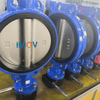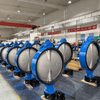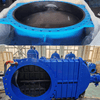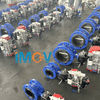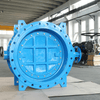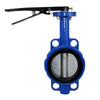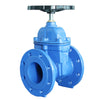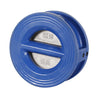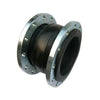Choosing the Right Valve: A Guide to PVC, CPVC, UPVC, and PP Materials
In modern fluid control systems, plastic valves are being increasingly adopted for their excellent performance and cost-effectiveness. Among the most popular materials are PVC (Polyvinyl Chloride) and CPVC (Chlorinated Polyvinyl Chloride), which are known for being lightweight yet durable. These materials offer outstanding corrosion resistance, making them ideal for residential, commercial, and even industrial water applications.
In addition to PVC and CPVC, PP (Polypropylene) is gaining attention in industrial settings due to its superior resistance to chemical corrosion and its higher temperature tolerance. This makes it suitable for handling high-temperature or highly corrosive liquids in a wider range of demanding environments.
Understanding the differences between these plastic materials helps in selecting the most suitable valve product for a specific application. The right choice not only enhances system efficiency but also reduces maintenance costs and extends service life.
Characteristics of PVC, CPVC, UPVC, and PP Materials
| Material | Description | Temperature Range | Key Advantages | Typical Applications |
|---|---|---|---|---|
| PVC (Polyvinyl Chloride) | A strong, cost-effective thermoplastic with excellent corrosion resistance and insulation. Withstands most acids and alkalis. | 0°C to 60°C | Affordable, good insulation, corrosion-resistant | Cold water supply, irrigation, pool systems, general chemical handling |
| CPVC (Chlorinated Polyvinyl Chloride) | A chlorinated version of PVC with a more stable molecular structure, offering significantly improved heat resistance. | Up to ~93°C | Higher heat tolerance, retains corrosion resistance | Hot water piping, industrial hot liquids, food-grade fluids |
| UPVC (Unplasticized Polyvinyl Chloride) | A rigid form of PVC without plasticizers, offering better structural stability and weather resistance. | -10°C to 60°C | High pressure tolerance, weatherproof, durable | Long-term water systems, high-pressure pipes, chemical pipelines |
| PP (Polypropylene) | A highly chemically stable material ideal for aggressive acids, alkalis, and corrosive media. Performs better than PVC and CPVC in harsh chemical environments. | ~90°C (up to 110°C short-term for reinforced types) | Superior chemical resistance, reliable in extreme environments | Electroplating, lab waste discharge, corrosive fluid systems |
In fact, many high-quality PVC valves are actually made from UPVC, which is often specified on product labels or technical datasheets to help users distinguish their strength and expected lifespan.
After understanding the characteristics of PVC as a material, we also recommend several high-performing PVC valve products that are well-suited for a variety of residential, commercial, and industrial applications.
PVC Valve : Butterfly, Ball, and Check Valves
PVC Butterfly Valves are compact, easy-to-operate flow control devices ideal for on/off regulation in large-diameter piping systems. With their lightweight, corrosion-resistant bodies, they are especially suitable for water treatment systems, agricultural irrigation, and light industrial chemical pipelines. The butterfly valve's design allows for quick opening and closing, along with moderate flow regulation, making it an excellent choice for handling large-volume media.

PVC Ball Valves are widely used thanks to their excellent sealing performance and quick shut-off capability. Commonly found in household water supply, gardening systems, swimming pool equipment, and low-pressure industrial pipelines, these valves feature a full-bore design that ensures minimal flow resistance. Their smooth-operating handles and easy maintenance make them a highly practical standard component in many fluid control setups.

PVC Ball Check Valves are designed to prevent backflow, offering a reliable one-way flow solution. These valves use a ball mechanism that closes automatically under gravity or reverse pressure, stopping media from flowing backward. Frequently used at pump outlets, in drainage systems, and in rainwater pipelines, PVC check valves perform reliably even in damp and corrosive environments—making them a low-maintenance, high-reliability option.

PVC Wafer Check Valves, with their compact wafer-style design, are ideal for installations where space is limited. Suitable for both vertical and horizontal mounting, these valves use either a spring or gravity mechanism to ensure one-way flow and prevent backflow. Easy to install and causing minimal pressure loss, wafer check valves are widely used in municipal water systems, rainwater harvesting setups, pond circulation, and medium-to-small pipelines in chemical and environmental industries.

When selecting the right valve product, understanding the material properties is only the first step—more importantly, you need a trustworthy manufacturer. Union Valve specializes in the design and production of high-quality fluid control products. With years of industry experience, we offer a full range of plastic valves—ball valves, butterfly valves, check valves, and more—made from PVC, CPVC, PP, UPVC, and other materials. Our valves are widely used in water treatment, chemical processing, irrigation, municipal engineering, and many other sectors.
If you’re looking for a reliable partner for comprehensive plastic valve solutions, feel free to contact us. Union Valve is here to support your fluid control systems with confidence and precision
Related Article:
- Understanding P&ID Symbols for Valve Systems
- Selection of Butterfly Valve Materials in Different Media Environments
- Functions and Features of Different Butterfly Valve Actuators
- Find Your Match: Butterfly Valve Handle Types Explained
- Do you know the 8 common API valve standards?


